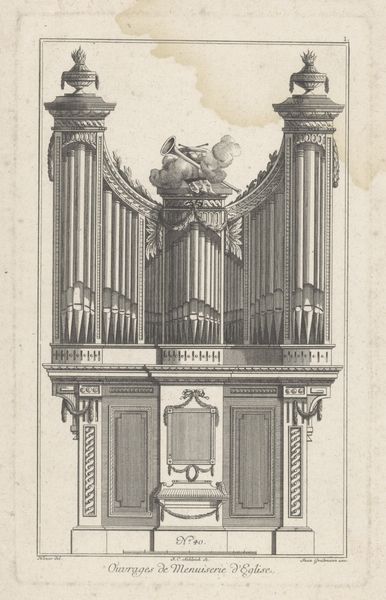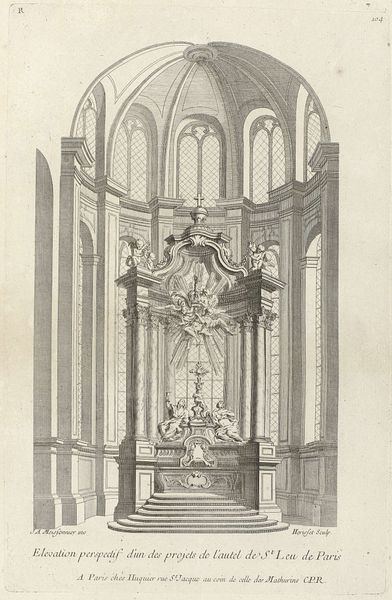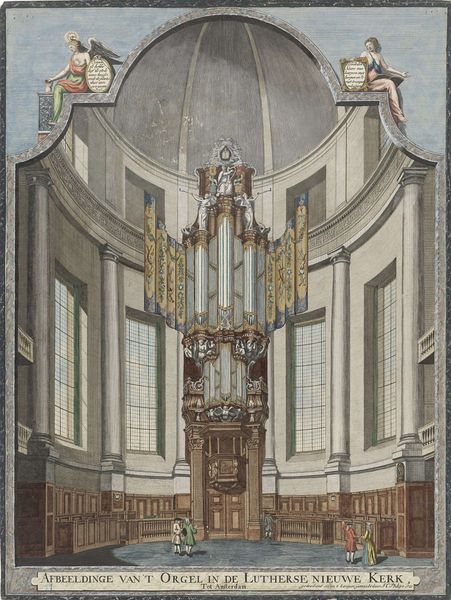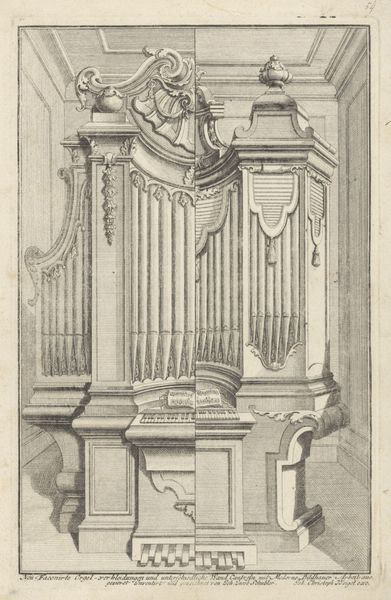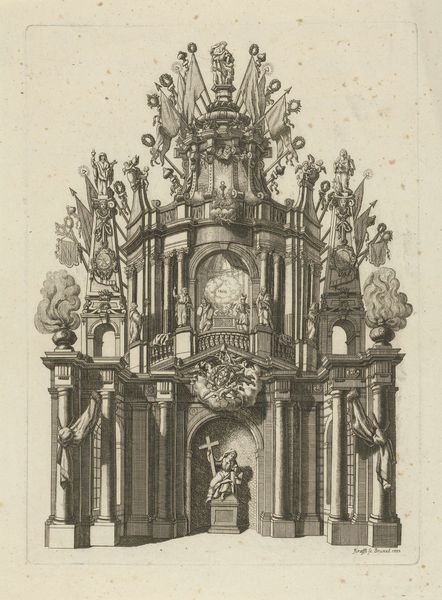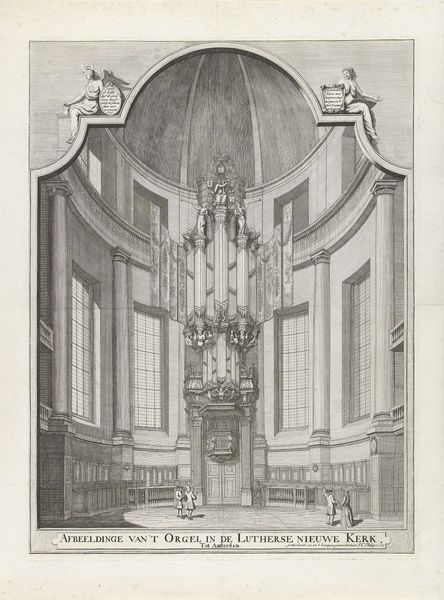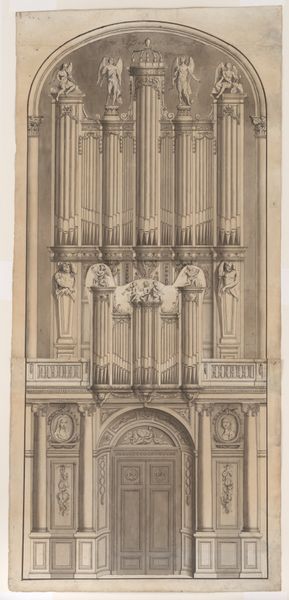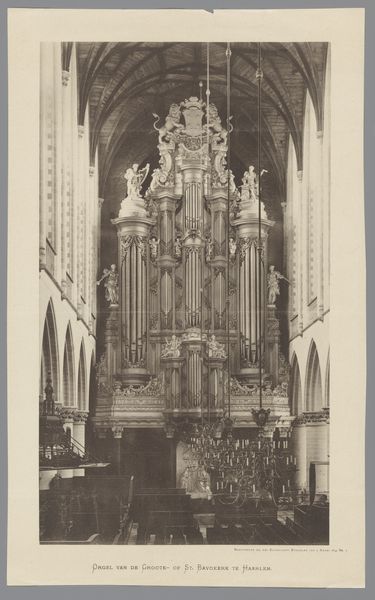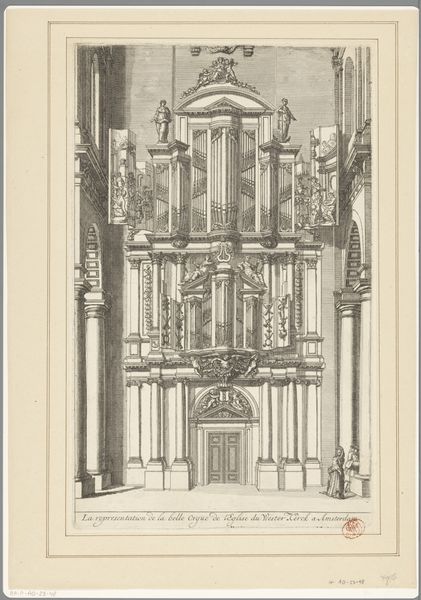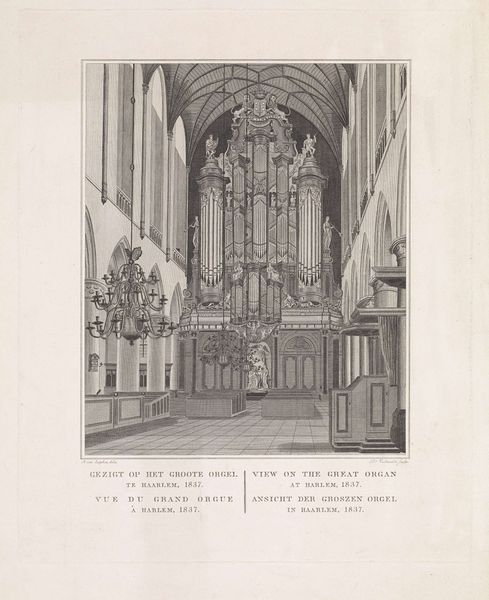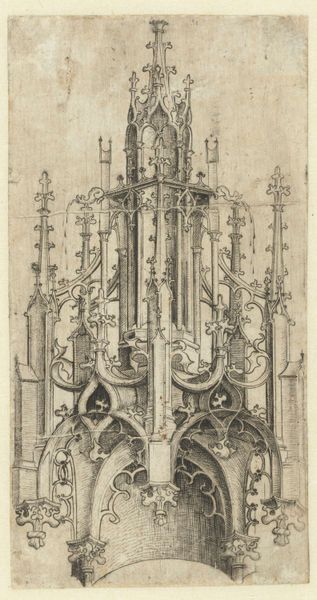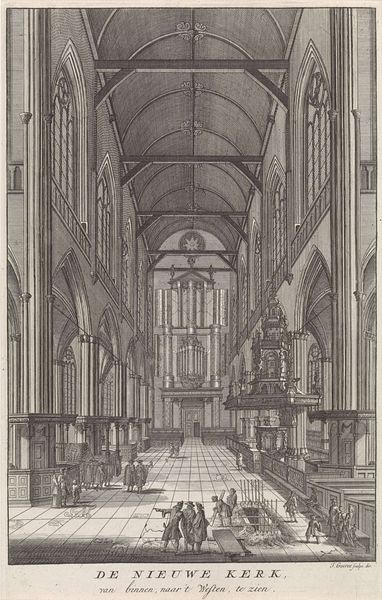
Interieur van Grote Kerk met Garrels orgel te Maassluis 1681 - 1746
0:00
0:00
print, engraving, architecture
#
baroque
# print
#
geometric
#
line
#
cityscape
#
engraving
#
architecture
Dimensions: height 509 mm, width 375 mm
Copyright: Rijks Museum: Open Domain
Editor: This engraving, "Interieur van Grote Kerk met Garrels orgel te Maassluis," is attributed to François van Bleyswijck, though the creation dates span from 1681 to 1746. What strikes me most is how the rigid lines create such a powerful image of architectural space. It's almost overwhelming. What social or cultural contexts might have shaped this representation of a church interior? Curator: The image’s power comes precisely from the institutional weight it conveys. Consider the Dutch Reformed Church’s role during this period. The clean lines, almost technical in their precision, speak to a Protestant aesthetic valuing order and reason. Editor: So the detailed depiction isn't just about architectural accuracy, but also communicating specific values? Curator: Precisely. Think about the deliberate placement of the organ, dominating the visual space. The organ becomes a symbol of the Church's authority, influencing and mediating spiritual experience through music. It projects institutional power in ways a simple sermon could not. Also consider who would commission and view such a print. Editor: Possibly civic leaders who took pride in their city’s institutions. Curator: Exactly. These kinds of prints, circulated among an educated elite, reinforced a sense of civic pride, stability, and religious conviction, reflecting back on a specific moment in time. How might public perception of Church and its power affect the popularity of this piece? Editor: It’s fascinating how something seemingly straightforward can reflect such complex social dynamics! I hadn't considered how visual representation becomes another tool of institutional power. Curator: Indeed. By viewing it within this context, this image can speak volumes about 17th and 18th century Dutch society, public devotion, and how societal power is visually communicated and reinforced through artwork like this.
Comments
No comments
Be the first to comment and join the conversation on the ultimate creative platform.

